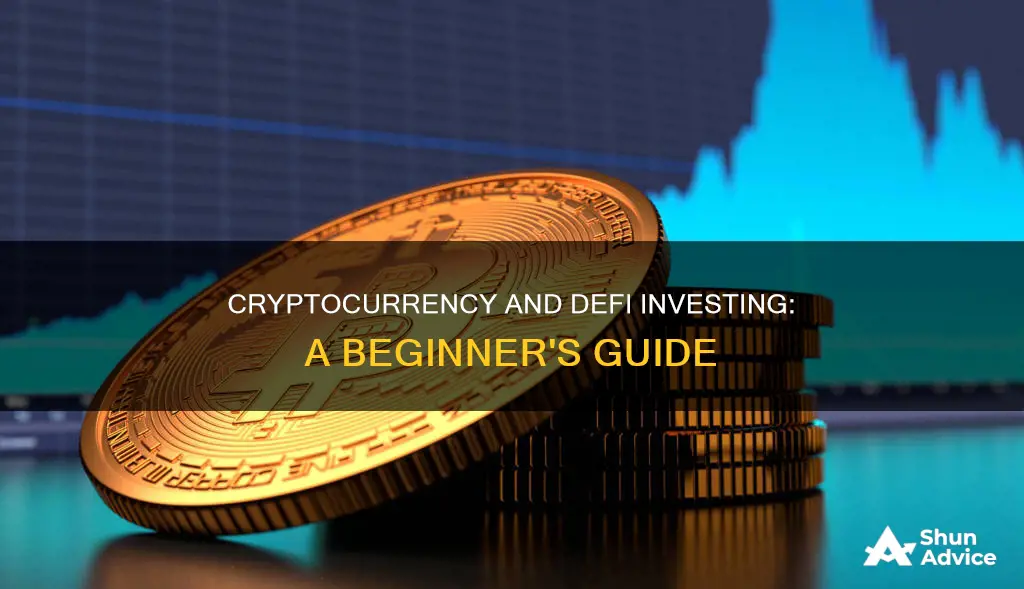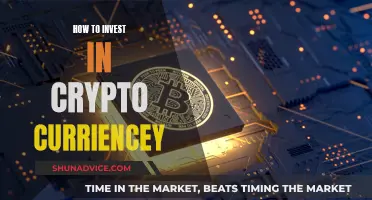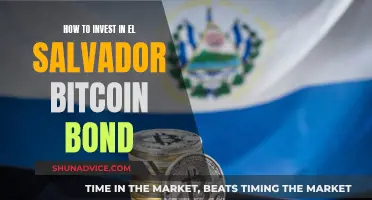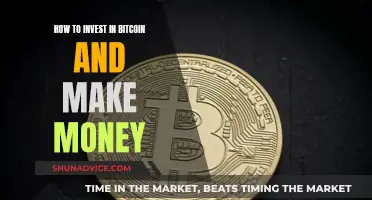
Investing in cryptocurrencies and DeFi projects can be a profitable endeavour, but it's important to understand the risks and complexities involved.
Decentralized Finance (DeFi) is a peer-to-peer digital financial system built on blockchain technology. By removing intermediaries like banks, DeFi offers lower fees, higher interest rates, and more accessible financial services. The lack of central authorities, however, also presents challenges and risks, including security threats and regulatory concerns.
To invest in DeFi, individuals typically need a crypto wallet, such as MetaMask, and purchase crypto coins, preferably those built on Ethereum, like Ether coins. They can then interact with DeFi protocols to lend, borrow, stake, or participate in liquidity pools and yield farming.
It's crucial to research and understand the risks of each DeFi project, considering factors like user adoption trends, the need they fulfil in the ecosystem, and the clarity of their project documentation.
While DeFi offers exciting opportunities, it is still in its infancy, and the cryptocurrency market is known for its extreme volatility. Therefore, investors should carefully consider their risk tolerance and conduct thorough due diligence before investing in this space.
| Characteristics | Values |
|---|---|
| Definition | Decentralized finance (DeFi) |
| How it works | DeFi uses peer-to-peer financial networks, security protocols, connectivity, software, and hardware advancements to eliminate the need for intermediaries like banks and other financial service companies. |
| Components | Cryptocurrencies, blockchain technology, and software that allow people to transact financially with each other. |
| Benefits | Accessibility, low fees, high interest rates, security, transparency, and autonomy. |
| Drawbacks | Susceptible to hacks and thefts due to sloppy programming and lack of security testing. Not fully anonymous. |
| Examples | Aave, Uniswap, Chainlink, Coinbase, Metamask, Aqru, and Lucky Block. |
| How to invest | 1. Choose a crypto wallet. 2. Purchase crypto coins. 3. Get started with protocols (lending, staking, yield farming, etc.). 4. Track your investments. |
What You'll Learn

Understand the basics of DeFi and its scope
Decentralized finance (DeFi) is a new way of handling money online without banks, using blockchain technology to let people deal with each other directly. It is an umbrella term for peer-to-peer financial services on public blockchains, primarily Ethereum.
DeFi uses blockchain technology to remove third parties and centralized institutions from financial transactions. It is built on secure distributed ledgers similar to those used by cryptocurrencies. DeFi uses blockchain technology to reduce the need for intermediaries like banks and other financial service companies.
A blockchain is a distributed and secured database or ledger. In the blockchain, transactions are recorded in blocks and verified through automated processes. If a transaction is verified, the block is closed and encrypted; another block is created with information about the previous block, along with information about newer transactions. The blocks are "chained" together through the information in each proceeding block, giving it the name blockchain.
DeFi applications are designed to communicate with a blockchain, allowing people to use their money for purchases, loans, gifts, trading, or any other way they want without a third party. These applications are programs installed on a device like a personal computer, tablet, or smartphone that make it easier to use.
DeFi applications provide an interface that automates transactions between users by giving them financial options to choose from. For example, if you want to make a loan to someone and charge them interest, you can select the option on the interface and enter terms like interest or collateral.
DeFi is mainly built on Ethereum and uses special blockchain contracts to make sure transactions are secure and efficient. DeFi already lets you do most things offered by traditional banks and centralized financial institutions, with new products and transactions available each day.
DeFi services tend to be faster, cheaper, and more simple, with new advantages and services being offered each day. DeFi is open to anyone with an internet connection, making finance far more accessible.
Why Older Generations are Investing in Bitcoin
You may want to see also

Choose a DeFi wallet
When choosing a DeFi wallet, it's important to understand the basics of what a DeFi wallet is and how it works.
A DeFi wallet is a non-custodial software application that acts as a gateway to the decentralised finance world. It allows users to store, buy and sell cryptocurrencies and non-fungible tokens (NFTs). It also enables users to earn passive income by staking or lending crypto on DeFi protocols, or to borrow funds by locking their assets as collateral.
DeFi wallets are set up on a phone or computer, either as a standalone application or as a digital interface for a hardware wallet. They generate a private key and backup seed phrase, which must be stored safely and securely.
There are two main types of DeFi wallets: software wallets and hardware wallets. Software wallets are the most common, with users downloading a free mobile app or browser extension to connect to a decentralised application. However, as these wallets are connected to the internet, their security is dependent on the security of the device. Hardware wallets, on the other hand, offer offline or 'cold' storage of assets and are therefore considered more secure.
When choosing a DeFi wallet, there are several key factors to consider:
- Self-custody: Look for a non-custodial wallet that is not managed by a third party. This ensures that you maintain control of your assets and private keys.
- Security: Set up 2FA authentication for added security. Choose a wallet with an integrated web3 browser that can screen transactions for potential threats.
- Compatibility and Interoperability: Select a wallet that supports the blockchain you want to interact with. Some wallets support multiple blockchains, making it easier to transfer assets between them.
- Team: Research the team behind the wallet. Are they reputable? Is their code open-source?
- Privacy: Choose a wallet that protects your anonymity and does not require personal information.
- Features: Look for a wallet that is easy to use and navigate, with built-in support for a range of decentralised applications and protocols. If you're an NFT collector, look for one that has NFT visualisation and collection data.
Some popular DeFi wallet options include MetaMask, TrustWallet, Ledger and Trezor.
The Wild Ride of Investing in Bitcoin
You may want to see also

Purchase crypto coins
To purchase crypto coins, you will need to sign up for a crypto exchange platform. There are around 500 exchanges to choose from, so it is important to do your research and select a reputable platform. Some popular options include Coinbase, Crypto.com, Kraken, and Gemini. These platforms allow you to buy and sell hundreds of different cryptocurrencies, including Bitcoin, Ethereum, Dogecoin, and Cardano.
Once you have chosen an exchange, you will need to create an account and provide personal information for verification. This process may vary depending on the platform and your location, but it often includes providing a form of identification, such as a government-issued ID.
After your account is set up, you can deposit funds into your account using a supported payment method, such as a bank transfer, credit card, or debit card. Keep in mind that different exchanges support different payment methods, so be sure to check that your preferred method is accepted.
Now that you have funds in your account, you can navigate to the exchange's trading platform and select the cryptocurrency you want to buy. Enter the amount you want to purchase and confirm the transaction. The crypto will then be deposited into your account, and you will officially own your first crypto coins!
It is important to note that there are risks associated with investing in cryptocurrencies, and the value of your investment may fluctuate. Always do your own research and only invest what you can afford to lose. Additionally, it is recommended to use a secure crypto wallet to store your crypto holdings, such as the Metamask wallet or the Crypto.com DeFi Wallet.
Strategizing Bitcoin Fund Investments: A Comprehensive Guide
You may want to see also

Get started with protocols
Getting Started with Protocols
Now that you have a crypto wallet and have purchased some crypto coins, it's time to dive into the protocols that make DeFi so popular. Here are the steps to get started with DeFi protocols:
- Choose a DeFi Protocol: Research and select a reputable DeFi protocol that aligns with your investment goals. Popular protocols include lending protocols such as Aave, Maker, and Compound, as well as decentralised exchanges like Uniswap.
- Visit the Protocol's Website or App: Go to the chosen protocol's website or download its official app. This is where you will interact with the protocol and access its features.
- Connect Your Crypto Wallet: To start using the protocol, you will need to connect your crypto wallet. Follow the instructions provided by the protocol to link your wallet, allowing their platform to access your crypto coins securely.
- Follow the Protocol's Instructions: Each protocol will have its own set of instructions and guidelines. Read through them carefully and follow the steps to start trading, yield farming, lending, or any other activities offered by the protocol.
- Explore Different Protocols: There are various types of DeFi protocols, including lending protocols, decentralised exchanges, liquidity pools, yield farming platforms, and more. Experiment with different protocols to find the ones that best suit your investment strategy and risk tolerance.
Remember that investing in DeFi comes with risks, including volatility and the potential for scams. Always do your own research, assess your risk tolerance, and only invest what you can afford to lose.
The Ultimate Guide to Investing in Bitcoins
You may want to see also

Track your investments
Tracking your investments is crucial to managing your portfolio and ensuring its long-term health. This is especially true for cryptocurrencies, which are highly volatile and susceptible to rapid price changes. Here are some tips to help you effectively track your crypto and DeFi investments:
Choose a Crypto Portfolio Tracker
Use a cryptocurrency portfolio tracker, a digital platform or app that allows you to monitor the ever-changing value of your coins and manage your portfolio. These platforms often integrate with crypto wallets and exchange accounts, making it easier to track your assets. Look for features such as a high level of security, automation for ease of use, and the ability to track your entire portfolio, including both crypto and fiat assets.
Connect Multiple Wallets
Many crypto investors use multiple wallets to manage their assets. Choose a portfolio tracker that allows you to connect unlimited wallets so you can track all your tokens and transactions in one place. This ensures you have a comprehensive view of your holdings.
Real-Time Tracking
The crypto market is highly dynamic, so it's essential to use a portfolio tracker that provides real-time data. Look for a platform that offers reliable, up-to-date information on market movements, enabling you to make fast and informed investment decisions.
Tax Reporting
Investing in cryptocurrencies often comes with tax implications. Choose a platform that helps you generate tax reports and complies with the regulations of your country. This will save you time and ensure you meet your tax obligations.
Security
When choosing a crypto portfolio tracker, prioritize platforms that offer robust security measures. Look for features such as end-to-end encryption, two-factor authentication, and read-only access to your data. This will help protect your sensitive financial information.
By following these tips and choosing the right tools, you can effectively track your crypto and DeFi investments, making more informed decisions and ensuring the long-term health of your portfolio.
A Beginner's Guide to Investing in Ravencoin
You may want to see also







